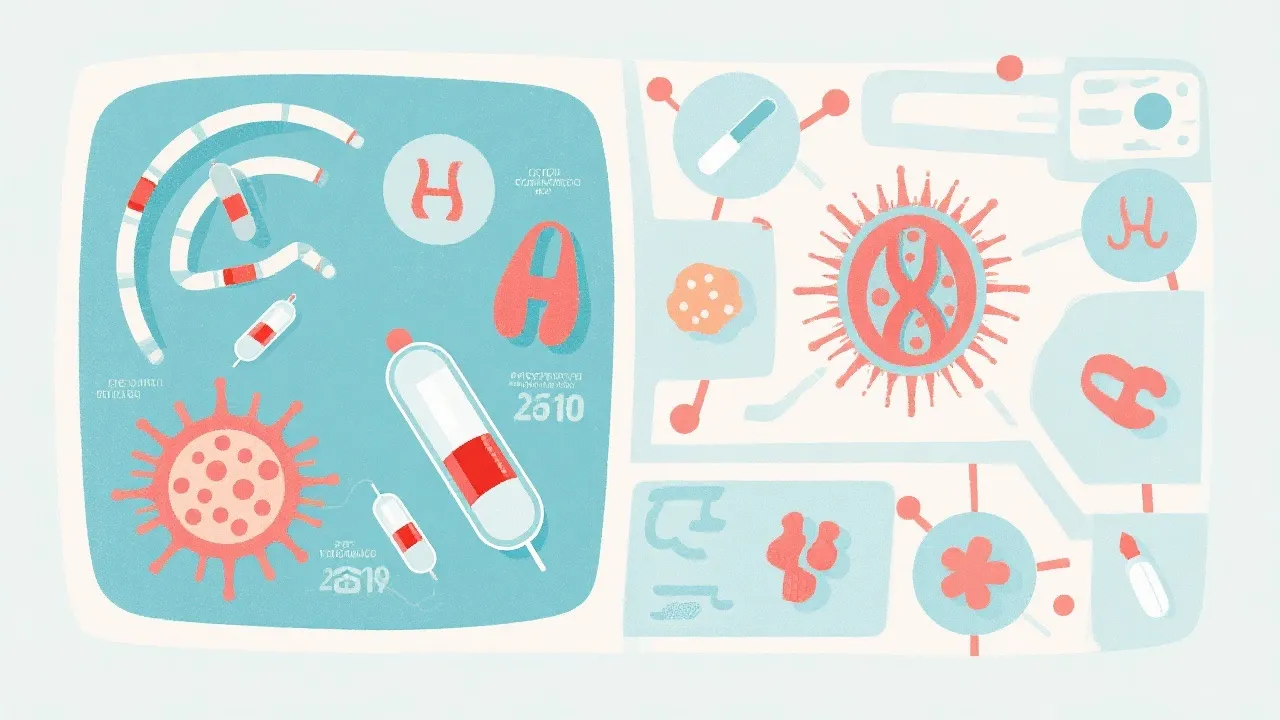This article delves into therapeutic strategies against HIV, providing a comprehensive overview of current and emerging treatments. Understanding HIV’s complexity is crucial, as it targets the immune system and can lead to AIDS if untreated. The article explores antiretroviral therapy, novel drug developments, and potential vaccine research while emphasizing the importance of these therapies in maintaining public health.

The Human Immunodeficiency Virus (HIV) is a persistent global health challenge, affecting millions worldwide. It targets the immune system, specifically the CD4 cells, leading to a weakened immune response. Without treatment, HIV can progress to Acquired Immunodeficiency Syndrome (AIDS), making individuals vulnerable to opportunistic infections. Consequently, therapeutic strategies against HIV are pivotal in managing the disease and improving patient outcomes. The implications of HIV extend beyond individual health, impacting social, economic, and public health realms, which further underscores the importance of comprehensive educational and prevention strategies.
HIV is primarily transmitted through unprotected sexual intercourse, sharing of needles, from mother to child during childbirth, and through breastfeeding. Globally, there are significant disparities in HIV incidence and prevalence, often correlated with socio-economic factors, healthcare access, education levels, and stigma surrounding the disease. For instance, sub-Saharan Africa bears the heaviest burden of HIV, accounting for approximately two-thirds of the total number of people living with HIV. In contrast, other regions, like Western and Central Europe, have seen substantial declines in infection rates due to effective public health interventions and treatment accessibility.
The stigma attached to HIV/AIDS also plays a formidable role in the management of the virus. Many individuals affected by HIV may avoid seeking treatment or testing due to fears of discrimination or ostracism. Public health campaigns that address stigma and promote understanding and awareness of HIV can play a crucial role in changing perceptions and improving health outcomes.
Antiretroviral therapy (ART) remains the cornerstone of HIV treatment. This approach involves a combination of drugs from different classes, designed to inhibit various stages of the HIV lifecycle. These classes include:
The effectiveness of these drugs has revolutionized HIV management over the past few decades, transforming HIV into a chronic but manageable condition. Patients who adhere to their ART regimens can achieve undetectable viral loads, meaning they cannot transmit the virus to sexual partners—a concept known as "undetectable = untransmittable" (U=U).
Moreover, the landscape of HIV therapy has been shaped by ongoing research into optimizing treatment regimens. These include simplified regimens with a fixed-dose combination of medications, which can enhance adherence and lead to better long-term health outcomes. Furthermore, the development of long-acting injectable formulations of ART offers patients more flexibility, as they require fewer doses compared to conventional daily pills.
New research and technological advances continually enhance therapeutic options for HIV. The following are noteworthy developments:
These advancements promise a future where HIV may be entirely eradicated, or at the very least, managed with significant mitigation of social and health impacts. Continuous investment in biomedical research, coupled with a commitment to decreasing stigma, education, and community-based prevention strategies, will be paramount to successfully addressing this epidemic.
Despite advances, several challenges hamper progress in therapeutic strategies against HIV:
Addressing these issues is critical to enhancing the efficacy and reach of HIV therapies. This multifaceted approach involves not only advancing drug development but also incorporating psychological and social support systems into the healthcare framework for individuals living with HIV. Initiatives that foster resilience, offer mental health support, and build capacity within communities can greatly enhance the effectiveness of therapeutic strategies.
| Therapeutic Strategy | Advantages | Limitations |
|---|---|---|
| Antiretroviral Therapy (ART) | Effective in reducing viral load; proven track record; provides long-term viral suppression. | Requires strict adherence; potential for drug resistance; side effects can impact quality of life. |
| Gene Editing (CRISPR) | Potential for a functional cure; precision targeting; revolutionary approach to virus eradication. | Still in experimental stages; ethical concerns around genetic manipulation; long-term consequences unknown. |
| Long-acting Injectables | Convenient dosing schedule; potentially improved adherence; reduction in pill burden. | Limited to specific drug combinations; may not be accessible to all patients; concerns about injectable site reactions. |
| Broadly Neutralizing Antibodies (bNAbs) | Can attack multiple strains of HIV; potential use in both treatment and prevention; less frequent dosing. | Still under investigation; high cost may limit accessibility; must be tailored to individual needs. |
| Therapeutic Vaccines | Could enhance immune response; may assist in long-term viral control; potential for less dependence on ART. | Vaccines have been difficult to develop; ongoing trials are necessary to establish efficacy. |
In conclusion, while substantial progress has been made in therapeutic strategies against HIV, ongoing research and efforts are necessary to overcome current challenges and work towards eradicating this virus. Understanding and addressing the dynamics of HIV's impact will be crucial, not just for individual health but also for public health efforts that prioritize health equity and accessibility. Collaborative efforts addressing education, stigma, and healthcare resources will ultimately lead to improved outcomes and greater public health benefits as we work to defeat the impact of HIV globally.
Explore the Tranquil Bliss of Idyllic Rural Retreats

Ultimate Countdown: The 20 Very Legendary Gaming Consoles Ever!

Affordable Full Mouth Dental Implants Near You

Discovering Springdale Estates

Embark on Effortless Adventures: Unveiling the Top in Adventures Made Easy Outdoor Equipment

Unlock the Full Potential of Your RAM 1500: Master the Art of Efficient Towing!

Dodge Ram: Redefining the Future of Full-Size Trucks with Unmatched Power and Innovation

Get New Phones Without Plans Easily

Smart Strategies to Slash Costs on Your Roof Replacement Endeavor
